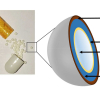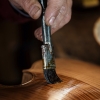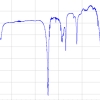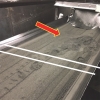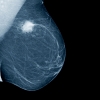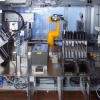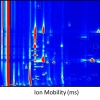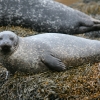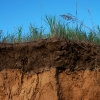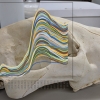Articles
Medicine Identification New Database (MIND): A quick, simple and accurate tool for the identification of unlabelled medication in hospital pharmacies
Once tablets and capsules have been removed from their original packing (which they often have to be), the possibility of certain identification is lost and mixups can happen. The authors have developed a database containing physical information about tablets/capsules and, crucially, ATR/FT-IR spectra. The spectra are usually able to narrow down the “prediction” to the correct medicine.
SensorFINT, the new European Network for assuring food integrity using non-destructive spectral sensors
The SensorFINT COST Action is a European Network for assuring food integrity using non-destructive spectral sensors.
FAIR practice
Following our articles on the FAIR initiative, we now look at some examples of the FAIRification of data handling, collection and archiving.
Surfing through the coating system of historic bowed instruments: a spectroscopic perspective
Cultural heritage is a growing application area for spectroscopy, and our second article describes how infrared and X-ray spectroscopy are being used to explore the coatings used by the old Cremonese makers that produced such outstanding sound.
FAIR enough?
The Tony Davies Column offers a challenge to us all with another contribution on FAIR data, which should be Findable, Available, Interoperable and Readable. It is clearly the way we should all be going, everybody from manufacturers and software developers, through researchers to publishers needs to work together.
WHAT are sampling errors—and WHAT can we do about them? Part 1
The Sampling Column provides some easy-to-understand examples of what sampling errors are, what are the consequences of them and what can be done about them. Particular examples from pharma, PAT and NIR spectroscopy are provided.
analytica virtual 2020: a new platform in times of contact and travel restrictions
How did a major trade show organiser cope with the disruption of COVID-19? Susanne Grödl, Exhibition Director of analytica for Messe München, gives her experience.
Letter to the Editor: origins of volume fraction for better calibrations
Following on from a recent column that reported on work which had shown that weight fractions were often incorrect concentration units to use in quantitative chemometric studies, Howard Mark goes into more detail.
Bill George
Peter McIntyre and Tony Davies remember Bill George, a real Welsh character and educator whose style and charisma influenced many to go on and not only stay in science but to rise to leading positions either in industry or academia.
Study on lipid metabolism in human breast tissues by near infrared spectroscopy
This article reports the use of near infrared (NIR) spectroscopy for the diagnosis of human breast cancer using tissue sections similar to those used by pathologists.
Weights or measures for better calibration
In quantitative analysis, is it better to weigh materials when making up standard solutions or to use volumetric techniques? Traditionally, the answer has been “volume”, however, things may not be as straightforward as they seem. Henk-Jan and colleagues have conducted a new experiment, using robots for both sample preparation and spectroscopic analysis which may provide a definitive answer. Unfortunately, the answer must wait for publication of their paper, but Tony and Henk-Jan’s history of this question makes interesting reading nevertheless.
Identification of dental materials in food
FT-IR spectroscopy and ED-XRF are used to determine the origin of contaminants in food that may, or may not, have originated from dental materials.
COVID-19: Lock-down and up-skill
With a significant proportion of our regular readership probably under home lock-down, we were wondering if we could help you at this difficult time by pointing out some useful online resources. So, when we finally come out of this pandemic, you could do so better skilled and more up-to-date than when we went in to it.
Planning for EuroAnalysis 2021
Tony and Lutgarde Buydens give us an update on the planning for the major EuroAnalysis 2021 conference, which is being held in Nijmegen, the Netherlands, at the end of August 2021. At this stage, they are keen to gather suggestions from readers on topics they would like to see covered. Groups are also invited to consider hosting their own event under the EuroAnalysis 2021 banner.
Pre-processing spectroscopic data: for good or ill?
The authors offer many useful points to consider when using pre-processing techniques.
Near infrared spectroscopy unlocks the secrets of mammalian diving success
This article reports on work using NIR spectroscopy to investigate the physiology of seals during diving. As well as the versatility of NIR spectroscopy, the technical achievements involved in placing a spectrometer on a seal without harming it and recording data underwater are amazing.
Application of Theory of Sampling principles for real-time monitoring of pharmaceutical powder blends by near infrared spectroscopy
This column shows how well the Theory of Sampling is able to address the powder sampling difficulties that have plagued the pharmaceutical industry for a long time. Definitely, a practical example of the importance of representative sampling.
Determination of soil organic matter using visible-near infrared spectroscopy and machine learning
The authors describe work they are doing to develop a green methodology to determine soil organic matter. If the World’s population is to be fed in the future, improvements to agricultural productivity are required and soil fertility will be key to this. Current methodologies are time-consuming and expensive, but visible-near infrared spectroscopy has the potential to replace them.
Old burned bones tell us about past cultures
Burned bones are often found in archaeological sites as a result of fire or funerary practices and are often the only preserved human remains. Using inelastic neutron scattering, infrared and micro-Raman spectroscopies, the authors can reach definitive conclusions as to the temperature at which the bone was burned. This enables archaeologists and anthropologists to learn more about how ancient civilisations used fire for funerary, burial or cooking purposes.
Near infrared spectroscopy, the skeleton key for bone identification
Knowledge of the origin of bones has applications in anthropology, archaeology and forensics; NIR spectroscopy, even with handheld instruments, is showing promise in being able to differentiate bones from different species.

